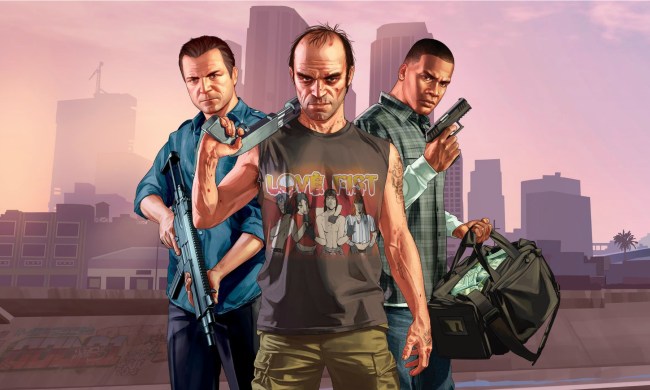Before launch, Meet Your Maker was widely compared to Super Mario Maker. After spending a few hours with the hybrid shooter-builder, I found that comparison to be less and less applicable (outside the obvious fact that both games feature level-creation systems).
Meet Your Maker is a much different beast than something like Mario Maker, and the differences go beyond just the change in perspective and style. The game is broken up into two parts that feed into one another: raiding other players’ custom-built bases to steal a vile of genetic material, and building your own deathtrap for others to attempt the same. Successful raids reward you with upgrade materials to improve your own creations, and every player who dies trying to raid you will drop additional currencies.
It took a bit to grow on me, but once I got into the flow I became hooked on creating death traps in a way I wasn’t expecting. I imagine players might have the same experience, as a slow opening hides a unique little genre mash-up.
Slow and steady
Meet Your Maker’s plot is little more than set dressing for the gameplay loop of raiding bases to steal a McGuffin — genetic material — to bring back to your base to level up. It smartly starts players off in pre-built stages to learn the game’s flow rather than tossing them in a crapshoot of user-created dungeons.
On the action side, the biggest mental shift I had to make was treating Meet Your Maker less like an arena shooter such as Doom or Quake, and as something closer to a Counter-Strike. My starting weapon — a bolt launcher — only has two shots and drops off due to gravity at short range. Once fired, those bolts need to be collected to shoot again, otherwise leaving me with just a melee weapon. Add to the fact that my Custodian dies in a single hit, whether that be from a trap or AI guard, and Meet Your Maker often felt punishing while I was getting my bearings.

The quality of the first real raid every player takes will have a major impact on whether or not this more methodical gameplay style clicks. Once the tutorial raids are done, you’re free to pick from a list of randomly selected user-created levels in a server list-style menu with sections for easy, medium, and hard-ranked levels based on how many times players have died attempting them. My first “real” level turned out to be more informative than the tutorial. It showed me how fair the systems actually were once I properly utilized them.
I wasn’t supposed to feel like a high-speed agent of death, but a precise and tactical soldier. Every incoming hit is telegraphed with a red indicator on the edge of the screen warning players where some danger is coming from. If I walked over a spike trap or in the line of sight of a wall-mounted spear launcher, there was a split second where I could react.
The randomized nature of user-created levels can be a blessing and a curse. For every good one, there’s a comparatively lazy one. Simple hallways with nothing but spike traps on the floor are tedious and boring, but at least quick to finish or abandon. Had I been unfortunate enough to get a series of these as my first experience with Meet Your Maker, I could easily see myself putting it down and never coming back to it.
Build, raid, repeat
The building half of Meet Your Maker is smartly locked off until completing a few raids. This gives players the opportunity to get some inspiration from other creations to replicate or improve upon as a starting point. I was intimidated by the idea of building my own base on a console, expecting the controls to make the entire process either too confusing, too tedious, or both. While Meet Your Maker doesn’t completely nail either aspect, it does far better than I anticipated.
Dungeon builds start on a foundation, with a start and end point already placed. You could scrap it all and build from scratch, but I found having that bit of structure helpful during my first build. Erecting walls and placing traps is intuitive and quite easy to get something built up. The main pain point here comes down to interface — specifically trying to switch between structures, traps, and guards. It takes just a few too many button presses to make executing my ideas satisfying. Rather than fully building out individual parts of my base at a time, I found it much more efficient to do each part at once: build the layout, then place traps, then guards, and finish up with tweaks.

This isn’t my ideal way to build a devious maze of death — I would much rather design full rooms one at a time — but also recognize that there’s likely no perfect solution. What’s important is that I knew how much potential the toolset allowed for (and even more as I unlocked new items) and have already seen some inspired builds.
And that loop is what Meet Your Maker will live or die on. Whether or not your roll of the dice lands you in a level that’s just a hallway with nothing but spear traps along the walls, or a multi-floor tower with patrolling guards and traps designed to funnel you into more danger, can make or break your first impression. That will become easier and easier to avoid as the community ranks levels over time, but Meet Your Maker needs a thriving player base to succeed. The satisfying gameplay and building mechanics are a solid foundation, but it’s in the hands of its sadistic community to make something special out of it.
Meet Your Maker is available now for PS4, PS5, Xbox One, Xbox Series X/S, and PC.



